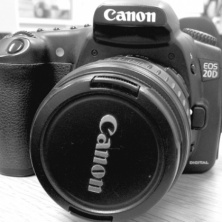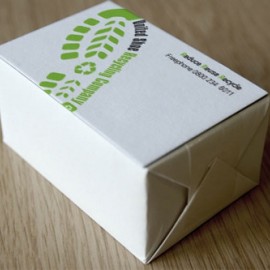How to be an eco-friendly print buyer
2nd May, 2017

When I think about the impact of our industry on the environment, my head starts to spin a little bit. Not a minute goes by in my day-to-day life where I can’t see an example of a piece of print, whether it be a magazine, a newspaper, a leaflet, a catalogue or a shop sign. These products are everywhere, all the time, in excess.
And where do they end up once they’ve outlived their usefulness? In the recycling bin is the best case scenario. It’s uncomfortable to think about how much waste we are responsible for. So uncomfortable that it’s easier not to think about it at all.
Whether we choose to think about it or not, unfortunately it’s everyone’s problem.
"Anything else you're interested in is not going to happen if you can't breathe the air and drink the water. Don't sit this one out. Do something." - Carl Sagan
So, how can we reconcile the impact of printing on the environment? Surely if my job requires that I buy print for my company, there’s nothing I can do? In fact as print buyers, there’s loads we can do.
1. Seek ISO accreditations
When selecting a supplier, check to see if they have an ISO 14000 accreditation. This can be any kind of supplier, not just print. ISO 14000 is used to manage the environmental responsibility of a company, so if your supplier has this accreditation it means they are compliant with strict best practises.
2. Ask questions about printing inks
Vegetable, latex and water based inks are widely available for a variety of different printing processes with no compromise on quality.
3) Look for the FSC logo
FSC is a not-for-profit organisation focused on the protection of our forests, endorsed by WWF, Greenpeace and The Woodland Trust. The presence of the FSC logo means that the substrate has been responsibly sourced.
4) Check the paper stocks available
The range of recycled papers currently available is unprecedented. Sadly, there is usually a premium to pay, however for tight budgets combination papers that use part recycled stock are a good alternative.
5) Laminates and PVC
Although paper is biodegradable, PVC and laminates often aren’t. If you can remember this mouthful; cellulose-based bio acetate is a great eco-friendly option for a good quality laminate. Although it is possible to recycle PVC sadly it usually ends up in landfill. From creation to disposal, PVC is heavy on emissions, so we would discourage this as an option for those seeking an eco-friendly choice. Ask for alternative recommendations such as paper based products or alternative plastics.
6) Shop locally
Establishing a reliable, local supply chain is one of the simplest steps you can take. The closer your supplier is to your office, the less distance the product has to travel before it gets to its destination. It’s not hard to work out that this produces less emissions. A UK-based supply chain usually means no air miles too!
7) Push carbon neutral schemes
Carbon neutral schemes are becoming more and more popular. Organisations such as Climate Partner make it unbelievably easy to completely neutralise the carbon footprint of a company’s products or services. Once a business is enrolled in the scheme, offsetting a product’s carbon impact can be done in a button-push.

The more we ask questions, request information and create a demand for these products, the more widely available they will become. Printing is a highly competitive market and the one thing that all suppliers have in common is that they want to win your business. If more print buyers vote with their buying decisions and don’t place print with suppliers who don’t have a basic sense of environmental responsibility, then the standard will be forced to change. When we are discussing projects with colleagues, bringing these points up will ensure that these issues remain visible on our list of priorities as print buyers.
Interested in seeing how your print buying could be more eco-friendly? Talk to us and we can complete a full review of your requirements to see what can be improved. Check out our printing page to see what we offer, or get in touch to get started.
Further reading:
http://www.climatepartner.com/en







Comments
comments powered by Disqus